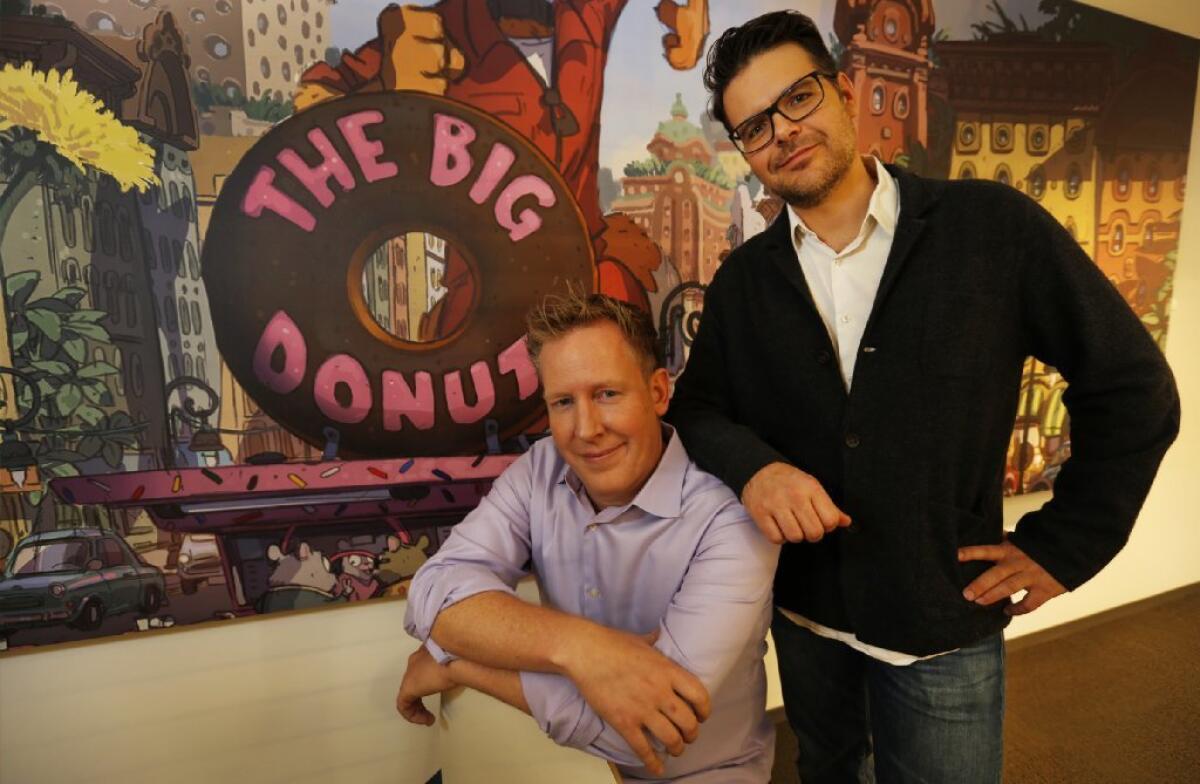Lessons on bias and prejudice dwell within the world of ‘Zootopia,’ according to its writers

- Share via
We both have young kids about the same age, and a few days ago, one of our 4-year-old sons asked, “Dada, can I poop on Donald Trump’s head?” It’s a complicated question with no easy answer.
These are challenging times.
So how do we talk to our kids about our turbulent world? How do we give them hope that they have any shot of healing a system so rooted in pervasive hatred and fear-mongering? Although “Zootopia’s” release predated the election by eight months, these are the questions we constantly asked ourselves when writing the film. The fact that we used a talking bunny to shine a light on the uniquely human problems of bias and prejudice is no accident. Allegory hides more gracefully in animation than in any other medium, allowing us to bury deeper themes within a big, fun world of anthropomorphic animals.
In our story, a nefarious sheep uses fear as a great motivator. She rallies prey mammals (which constitute 90% of Zootopia’s population) against the minority predators, creating mass hysteria in the city. She rises to power on a platform of division and fear.
Again, this may seem like a ripped-from-the-headlines scenario, and in many ways it is. But prejudice isn’t new. At all. We saw it here and around the world time after time in the five years of writing this movie. And, honestly, it’s been a part of the human story since civilization began. “You are different. You might hurt me. I am afraid of you.” However, of all the mammals on our planet, humans are the only species who use this innate fear of the other to manipulate. To build ourselves up. To push others down. To control.
Everyone has preconceived notions about the ‘other.’ And when looking at it that way, we realized, ‘Hey, we all have something in common. We’re all flawed!’
— Jared Bush and Phil Johnston
And it’s easy to say, “Oh, but that’s not me. I’d never do that.” Yet some of the hardest conversations while writing “Zootopia” were about admitting that we all have built-in biases based on how we were raised, where we were raised, what we look like, what we watch on TV, and so on. Everyone — irrespective of race, sexual orientation, ethnicity, gender or nationality — has preconceived notions about the “other.” We are part of the problem. And when looking at it that way, we realized, “Hey, we all have something in common. We’re all flawed!”
With that in mind, we knew we wanted our hero, Judy Hopps, an underestimated, underdog bunny who believes in the goodness of others, to make the biggest mistake of all. To rip apart the city she loves with a few simple words that laid bare her own biases. In short, we wanted an animated Disney hero to be prejudiced.
Because if a noble, well-intentioned character like Judy could discover that bias deep within herself, then the rest of us just might too. And by facing it, not ignoring it, by talking about it, not staying silent, we might be able to start that uncomfortable conversation we need to have if we’re ever going to hope it will change.
See the most read stories this hour »
ALSO:
How ‘Zootopia’s’ upbeat score explores race and prejudice
Japan’s No. 1 film is playing in L.A. Here’s why you should see it
Dwayne Johnson gets animated in Disney’s Polynesian musical adventure ‘Moana’
Sign up for The Envelope
Get exclusive awards season news, in-depth interviews and columnist Glenn Whipp’s must-read analysis straight to your inbox.
You may occasionally receive promotional content from the Los Angeles Times.



